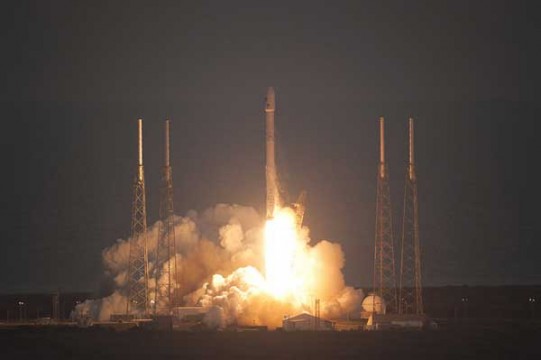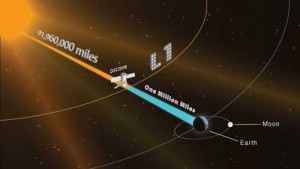Discovering Earth:
An innovative Earth-observing satellite now shows near-daily views of our home planet online.
After a long journey from its conception to its launch and orbit, the Deep Space Climate Observatory (DSCOVR) is now providing nearly daily views of our home planet online. It’s orbiting the Sun in step with Earth, beaming back the view from its L1 Lagrange point perspective about a million miles sunward.
Initially conceived as the NASA Tirana satellite in the late 1990s, and nicknamed ‘GoreSat’ for former Vice President Al Gore’s backing of the project, the mission evolved into the current DISCOVR satellite operated by NASA, the NOAA, and the U.S. Air Force.
Anyone can now access views of Earth in full illumination, reminiscent of the iconic ‘blue marble’ image shot by astronauts returning aboard Apollo 17.
Launched from Cape Canaveral atop a SpaceX Falcon 9 rocket on February 11th this year, DSCOVR follows Earth in its orbit around the Sun, circling the point between Earth and the Sun where gravity from the two points cancels out, known as the first Lagrangian point. Because the satellite can’t stay exactly on the L1 point, it orbits in what’s known as a ‘halo’ or Lissajous orbit around L1. The joint NASA/ESA mission SOHO is in a similar orbit about the L1 point. To date, the deployment of DSCOVR by SpaceX is the most distant fielded by the company’s Falcon 9 rocket.
An EPIC View
The images you see online at epic.gsfc.nasa.gov come courtesy of the Earth Polychromatic Imaging Camera (EPIC). The webpage notes the satellite’s position relative to the Sun and Earth, as well as the zenith points for both. EPIC’s field of view extends about 0.6 degrees wide and its resolution is about one arc second. In addition to monitoring weather patterns, EPIC will also peer through Earth’s atmosphere in the ultraviolet and infrared bands, monitoring everything from cloud dynamics to ozone and aerosol levels.
Earth’s Moon in its new phase occasionally ‘photobombs’ EPIC’s view, as it did earlier this summer, turning its unfamiliar far side toward the spacecraft, affording a unique and spectacular view.
“There will be a total solar eclipse on March 8-9, 2016 visible on the ground from the Southern Pacific,” says Adam Szabo, DSCOVR project scientist. “The Moon is not big enough to block sunlight for the whole disk of Earth. That is why total eclipses are only visible from a narrow region of Earth. From space, with DSCOVR, we should see the shadow of the Moon moving across the disk of Earth.”
Far beyond pretty pictures, DSCOVR is also providing essential climate science. In addition to instruments that monitor solar activity and the near-Earth space-weather environment, the National Institute of Standards and Technology Advanced Radiometer (NISTAR) will measure the total amount of the Sun’s irradiance that Earth reflects and emits, monitoring the spectrum from ultraviolet to infrared wavelengths. The overall energy budget of heat absorbed versus heat reflected back to space is a key piece of the climate change puzzle, and DSCOVR will scrutinize this balance in unprecedented detail.
“The DSCOVR mission has a 2-year required lifetime,” says Szabo. “After a very accurate launch by SpaceX, minimizing our correction burns, we have fuel for a considerably longer period of time. . . . We are hoping for at least five years.”
- See more at: http://www.skyandtelescope.com/astronomy-news/dscovring-earth-1027201533/?et_mid=795115&rid=250958391#sthash.BefbiaFY.dpuf


No comments:
Post a Comment